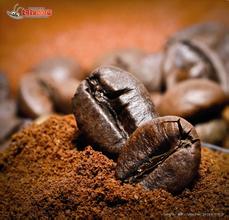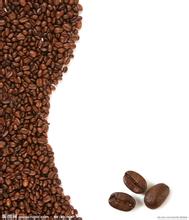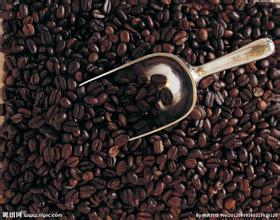How to use siphon coffee pot
method/step
Pour hot water into the glass. Add 200 ml of water to one cup, 175 ml without bottom water, and 350 ml for two cups. After pouring the water, wipe the glass ball with a rag, otherwise it is easy to break the glass.
Install the filter into the upper ball. Take the filter out of the water, clean it and press it dry. Hook the hook of the filter to the bottom of the upper ball, and then adjust the position of the filter to the middle position with the adjusting rod.
When the water boils, insert the upper ball into the lower ball. Turn to a small fire, carefully tilt the glass upper ball into the lower ball, make sure the water does not roll too much and spray, press the glass upper ball straight down slightly and rotate at the same time.
After the water rises halfway, add the coffee powder and start stirring. After stirring, start timing. Pour 15 grams into each cup, and start stirring for the first time, stirring time do not circle, should draw three-quarters of a circle back and forth, from top to bottom powder into the water, so that two different directions of force impact each other, do not stir too long, as long as the coffee powder can be dispersed.
A second stir was done at 25 seconds.
Stir for the third time at 55 seconds and turn off at 60 seconds. When brewing a cup of coffee, quickly pull up the upper ball after turning off the heat, pour out the remaining water of the lower ball, and then insert the upper ball back. This action is called pouring bottom water. If you don't want to do this step, the water only needs 175.
Wipe the glass ball with a cold and damp towel immediately after turning off the fire.
When the coffee is near the end of filtration, pull up the glass top ball and do not let the last coffee flow down. When coffee is brewed by siphon method, cleaning and preservation of filter cloth is quite troublesome. After the first use, the cloth quality will change from white to brown, accumulating fat and protein that cannot be completely removed. Contact with air will produce disgusting odor, which seriously affects the taste of coffee.

Important Notice :
前街咖啡 FrontStreet Coffee has moved to new addredd:
FrontStreet Coffee Address: 315,Donghua East Road,GuangZhou
Tel:020 38364473
- Prev

The major coffee producing countries in the world
India * Karnataka in southwestern India is the main producer, and coffee beans are in the shape of large grains. The coffee beans from the southeastern state of Tamil Nadu, though small in size, are of high quality in India. The African region of the world's major coffee producing countries * Ivory Coast, formerly known as Ivory Coast, is a world-famous coffee producer, and its Robusta original seed production ranks first in the world. Master
- Next

Species morphology of Colombian coffee-flavored coffee
The main varieties of Colombian coffee are small grains of coffee. Plants are small trees or large shrubs, 5-8 m tall, usually much branched at base; old branches gray-white, nodes dilated, young branches glabrous, compressed. Leaves thinly leathery, ovate-lanceolate or lanceolate, 6-14 cm long and 3.5-5 cm wide, tip long acuminate, acuminate part 10-15 mm long, base cuneate or slightly obtuse, rarely rounded, entire or
Related
- Does Rose Summer choose Blue, Green or Red? Detailed explanation of Rose Summer Coffee plots and Classification in Panamanian Jade Manor
- What is the difference between the origin, producing area, processing plant, cooperative and manor of coffee beans?
- How fine does the espresso powder fit? how to grind the espresso?
- Sca coffee roasting degree color card coffee roasting degree 8 roasting color values what do you mean?
- The practice of lattes: how to make lattes at home
- Introduction to Indonesian Fine Coffee beans-- Java Coffee producing area of Indonesian Arabica Coffee
- How much will the flavor of light and medium roasted rose summer be expressed? What baking level is rose summer suitable for?
- Introduction to the characteristics of washing, sun-drying or wet-planing coffee commonly used in Mantenin, Indonesia
- Price characteristics of Arabica Coffee Bean Starbucks introduction to Manning Coffee Bean Taste producing area Variety Manor
- What is the authentic Yega flavor? What are the flavor characteristics of the really excellent Yejasuffi coffee beans?

